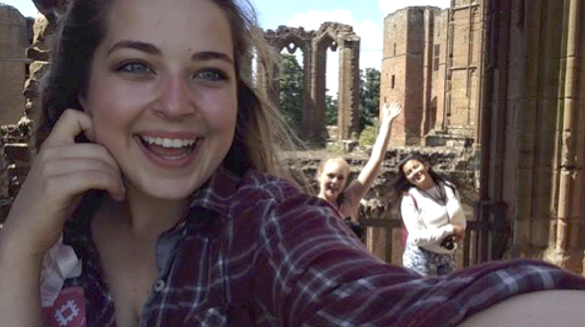English Gothic Live: Sarah’s Blog
Kenilworth was (Kenil)worth it
(Photos by Marissa and Claire)
Last summer, twelve students and one professor shared an unforgettable experience called English Gothic Live, a course on medieval and medievalist architecture which we studied on site while based at the University of Warwick. One of the course requirements was for each student to write a blog entry, and we will be posting all of those here over the coming weeks.
Anyone who knows me knows I love Castles. I just have a fascination with castles, it doesn’t matter condition they are in. Why? Because they can tell us about the experiences of the different social classes of the medieval world that once lived within their walls. The best part about actually visiting castles is that I am able to explore the different rooms which allows me to visualize the content I have learned. And that is exactly what this class has done for me.
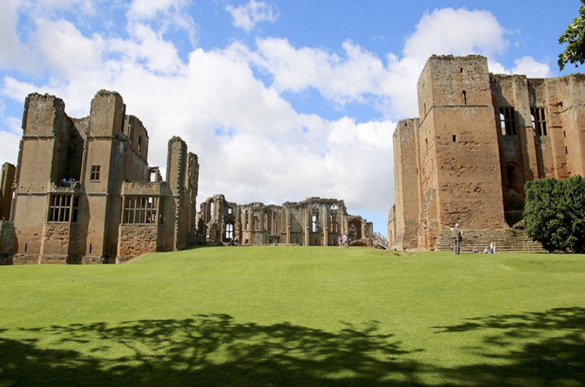
Kenilworth Castle is located a short distance away from Warwick University, this allowed us to have a later start to the day followed by perfect weather at the castle before it began to rain in typical British fashion at one of our next locations. At Kenilworth we discussed the Architecture of Power and how throughout the middle ages the way power and authority was represented through architecture changed. Although the architecture of power is familiar to me, Kenilworth was the perfect example of the succession of the uses of castles from defensive structures to displays of power through design to structures of dominance and attracting powerful people.
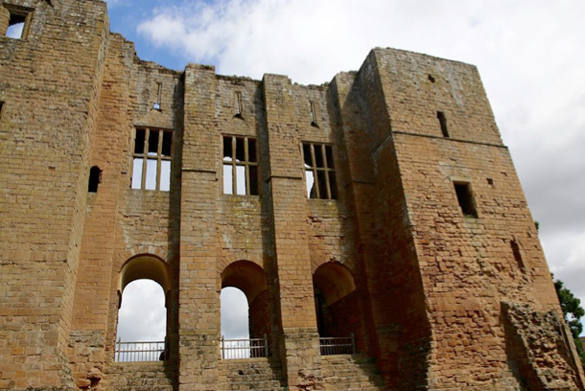
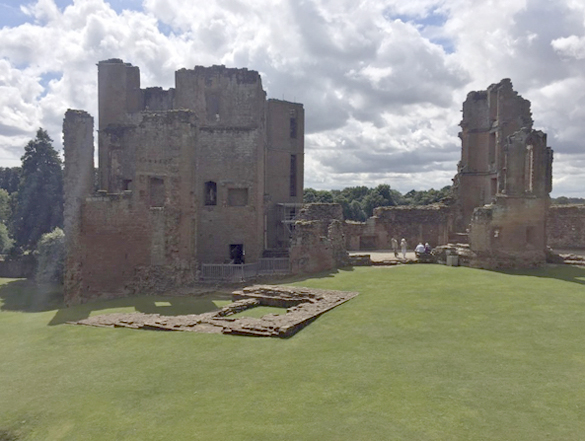
The 14th century keep was built by the third son of King Edward III. He used this building as a fortress as well as a statement of his entitlement over the land. Walking into the keep with Professor Coffman allowed me to actually visualize the walls and the floor that were no longer there. This is something that is impossible in a lecture setting. Being there and physically experiencing the structure itself while learning of its history is irreplaceable.
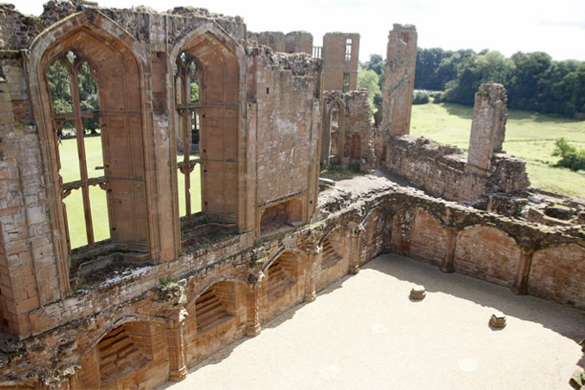
The 15th century building campaign contrasts to the thick solid structure of the keep, this section of the castle uses large windows and open space which at the time would have had aisle and arches and been used for entertainment purposes. This shows how the castle was no longer used for defensive purposes but to reflect the status of the Earl of Leicester and his power.
The Third building campaign was launched in the 16th century by Robert Dudley, Earl of Leicester, a favourite of the queen. He built this addition specifically to impress Elizabeth I, and probably a hopeful attempt to get her to marry him. This section of the castle had many rooms where the Queen would stay and be entertained. (Yes, we walked in a building Elizabeth I lived in, how cool is that !!??)
After discussing different aspects of the castle structure itself we were set free to explore the grounds. One of the signs advertising kids activities read “Every Kid Deserves to play at a castle! (again and again)” and I would say every undergrad and adult does too. There was plenty to explore, from ruins of the kitchens and pantries to the outer ward. Some of the castle is actually climbable, I went up with a group because we were brave (and cautious) enough to get up there. But it wasn’t just any climb. The views itself from the different levels of the castle, as cliché as this sounds, gave me power. Funny how that translates from the purpose of the building. As a result, Kenilworth castle was definitely (Kenil)worth it!
